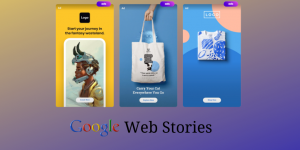
Listening to stories has always been the most favorite task of all of us since our childhood. Stories mesmerize us to a extent that we are lost in some other world forgetting about our existence in the real world. Stories grab the attention of an individual effectively and ensure to keep complete hold of it. Stories have the power to deliver the message in the right way. When you are designing some mobile or web apps, ensure to make it more effective by injecting UX Storytelling and this will ultimately lead to engage users easily by creating a memorable experience for them.
Before applying the concept of UX storytelling it is important for the designers to understand the foundation and the base of UX Storytelling techniques well. Once they get clarity on this, they will get an idea of how this can be utilized effectively to create designs that is sure to attract the audience.
What is UX Storytelling?
UX storytelling is the art of using narratives to enhance the user experience of a product or service. Storytelling in UX involves crafting a compelling narrative that resonates with users, guiding them through a seamless and engaging journey. By incorporating storytelling elements, such as characters, scenarios, and emotions, designers can create a more relatable and memorable experience for users.
In this way, the gap between technical functionality and user satisfaction, making the product usable and enjoyable. UX storytelling ultimately strives to connect users with the product on a deeper level, fostering a positive and lasting impression.
Why UX Storytelling is important?
UX storytelling is crucial because it transforms the user experience from mere functionality to a meaningful journey. Weaving a narrative into the design helps users connect emotionally with the product. Stories create relatable scenarios, making it easier for users to understand and navigate the interface. This emotional connection fosters a positive product perception, enhancing user satisfaction and loyalty.
Additionally, storytelling aids in communicating the product’s value, functionality, and benefits more effectively. It simplifies complex features, making the overall experience enjoyable and memorable. Ultimately, UX storytelling contributes to a user-centric design beyond usability, creating products users enjoy interacting with.
How to Improve UX Storytelling
There are some fundamentals that need to be considered while you are planning for the delivery of your UX Storytelling. The concept of Storytelling on general basis is slightly different from Storytelling considering the Digital Perspective. There are 9 basic fundamentals or the key elements that will make your UX Narrative more effective and will grab the attention of your audiences easily. Make sure to consider the following basic fundamentals in your storytelling:
1. Understand Your Users
In UX storytelling, delving into user research is like uncovering the preferences and needs of your audience. It’s akin to understanding the guests before hosting a party, tailoring your storytelling to resonate with their tastes. As you’d inquire about music or food preferences for a gathering, user research involves asking questions and observing behaviors.
This insight helps craft a narrative that aligns with user interests, making the UX storytelling experience akin to a personalized conversation. By understanding your users deeply, you enhance the effectiveness of your storytelling, creating a more engaging and user-centric design that meets their expectations and preferences.
2. Structure
Compelling UX storytelling is structured to captivate users. Begin by understanding your audience through thorough research and creating user personas for guidance. Craft a clear, impactful message, incorporating a structured story arc with introduction, conflict, and resolution. Visual elements like images and videos enhance engagement, emphasizing user journeys and showcasing seamless product integration. Encourage interaction through customizable elements.
Maintain consistency across touchpoints for a cohesive experience, using simple language and evoking emotions for connection. Integrate user feedback for continuous improvement, ensuring accessibility and mobile optimization. Experiment with A/B testing to identify the most compelling storytelling approaches. Foster a storytelling mindset within the team through workshops, promoting creativity and collaboration.
3. Creation of awareness
Elevate UX storytelling for awareness by crafting a focused message and understanding user needs. Enhance engagement with impactful visuals and an emotionally resonant narrative structure. Foster interaction through immersive elements and maintain consistency across platforms. Use precise language for broad accessibility and leverage social media for wider dissemination.
Share authentic stories to amplify relatability and integrate educational components. Embrace user feedback for ongoing refinement and optimize for mobile accessibility. Encourage user advocacy to transform your audience into active participants, creating a community-driven impact in spreading awareness effectively.
4. Simplified Language
When you’re communicating, it’s like having a chat with a friend. Use simple language, skipping the fancy words or confusing jargon. Imagine explaining things to someone not an expert in your field – you want them to get it quickly. It’s the same in UX design. When designing, keep it straightforward in UX narrative.
Instead of complex terms, use words everyone can understand. It’s like telling a story to a wide audience, ensuring everyone can follow without scratching their heads. Keeping the language simple ensures your users grasp your message effortlessly, creating a more enjoyable and user-friendly experience.
5. The lead character of your story
One of the important aspect of your UX narrative is the lead character of your story. Lead Characters depicts the exact purpose of the site. Identify the exact purpose of the site, the reason for which the site has been created and that reason will be the leading role of your story. The leading role should be the cynosure of your site and should be displayed clearly. Hiding it will lead the audience in confusion. You can provide a memorable user experience to all your users simply b considering following aspects:
- The visibility and the appearance of the Lead Role.
- Display of required information in form of text.
- Strong connection between Lead Role and Audience should be created so as to gain positive reviews.
6. Aspirations of your Site
Another important element to be considered in UX storytelling is the Aspirations of your site. The aspirations to be placed on the site can be from your point of view or it can also be from users point of view. Choosing the right point of view depends on the purpose of creating the site. With the motive of selling the products, your aspirations tend to be displayed on the site. But on the other end, if you wish to just educate the users by giving them information you in that case aspiration from user’s point of view will work the best. You need to get clarity on your purpose first this will ultimately give you clarity on the placement of aspirations too.
7. Virality
Boosting virality in UX storytelling involves creating compelling and shareable content with emotional appeal. Integrate visually appealing elements and interactive features, encouraging users to engage and share actively. Seamlessly embed social media sharing options within your design for easy dissemination.
Encourage user-generated content, infuse humour and relatability, and introduce surprise elements. Align your storytelling with current trends for timely relevance and include clear calls to action. Incentivize sharing with rewards and build a community around your brand. The UX designer should optimize UX design for sharing platforms and consider collaborations with influencers to broaden reach. Continuously monitor and iterate based on user engagement for sustained virality.
8. The Adversary
A story is incomplete without the existence of Adversaries in it. Adversary in UX Storytelling depicts the competitor’s site. If your site fails to fulfil the requirement of the users and they do not find you unique enough, then they are sure to visit your competitors. To avoid this scenario to be faced by you it is important to ensure that if a user is there to buy the product from your site, make them understand the need of the product and how can it be helpful to the user. If they are there to get some information, ensure to deliver them with easy accessibility of the required information.
9. The twists and turns
The twists and turns with the lead character are required to end your story well. Associating it with your website, twists and turns is all about bringing the users to conclude their visit to your site as per what you have planned for them. It is all about your call to action, converting the visitors in regular buyers by following techniques for storytelling in UX.
Also read:-
Importance of UI and UX in Mobile App Development
UI and UX Design in a nutshell How it impacts user behaviour?
The Conclusion
By this point of time, the visitors to the site should have get good experience pertaining to the site and they might as well have purchased the required product or have gathered enough information too as per their need. But this does not end here. Successful site is the one which brings back its visitors again by giving them an appropriate reason to come back again. Your sole purpose should not just be sale or giving them required information but it should be more than that where you are giving them a reason to visit you on constant basis.






